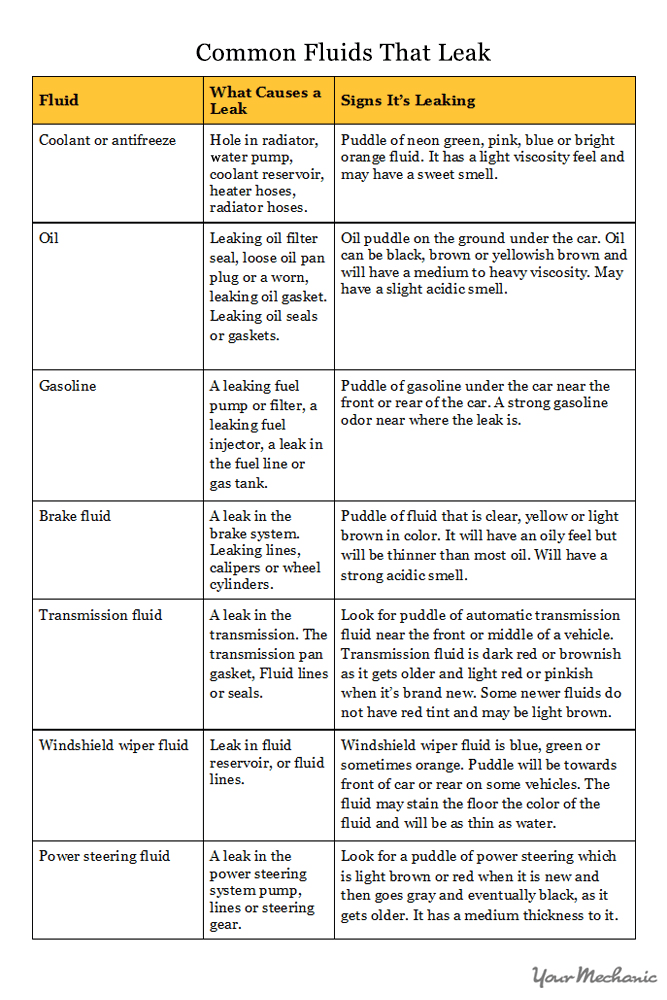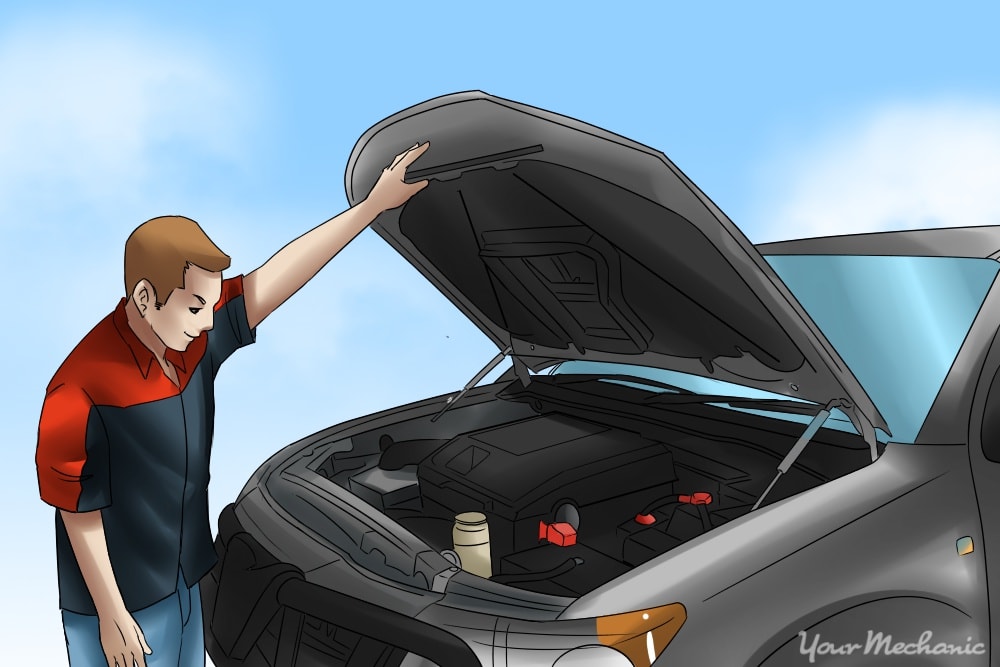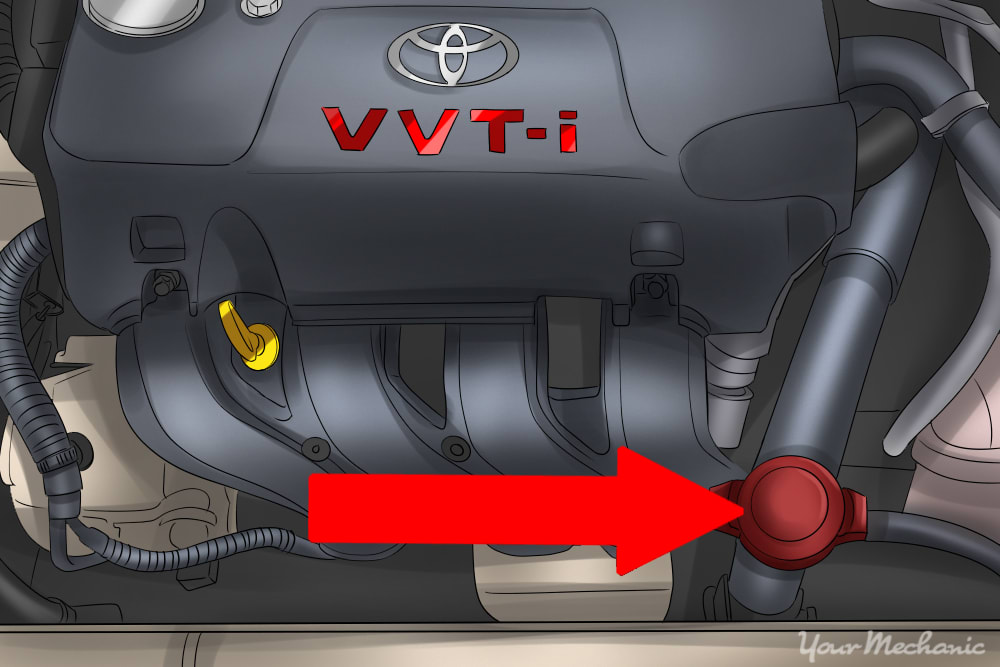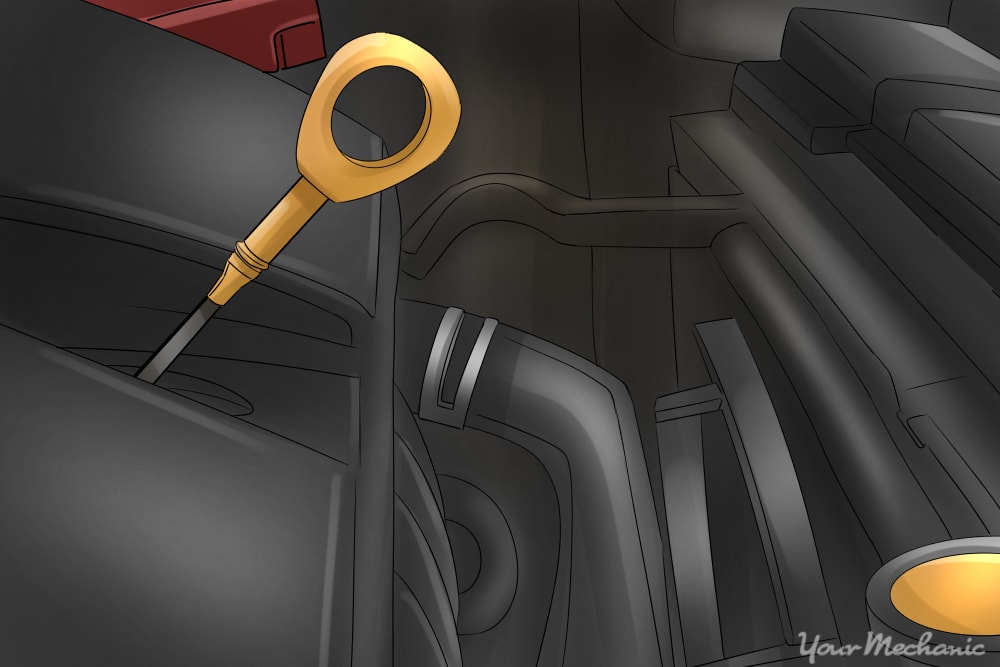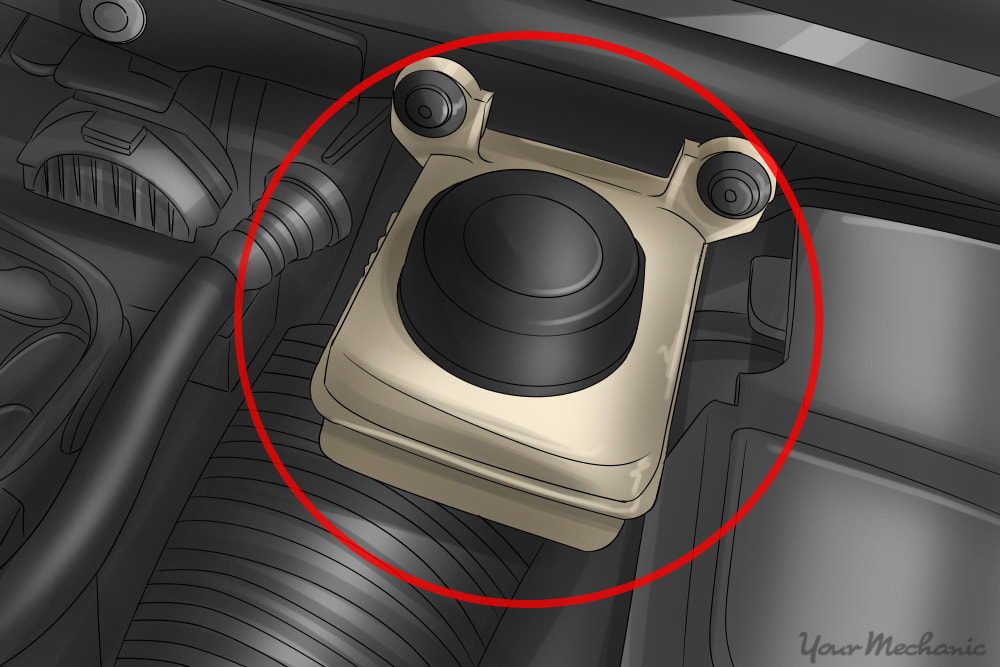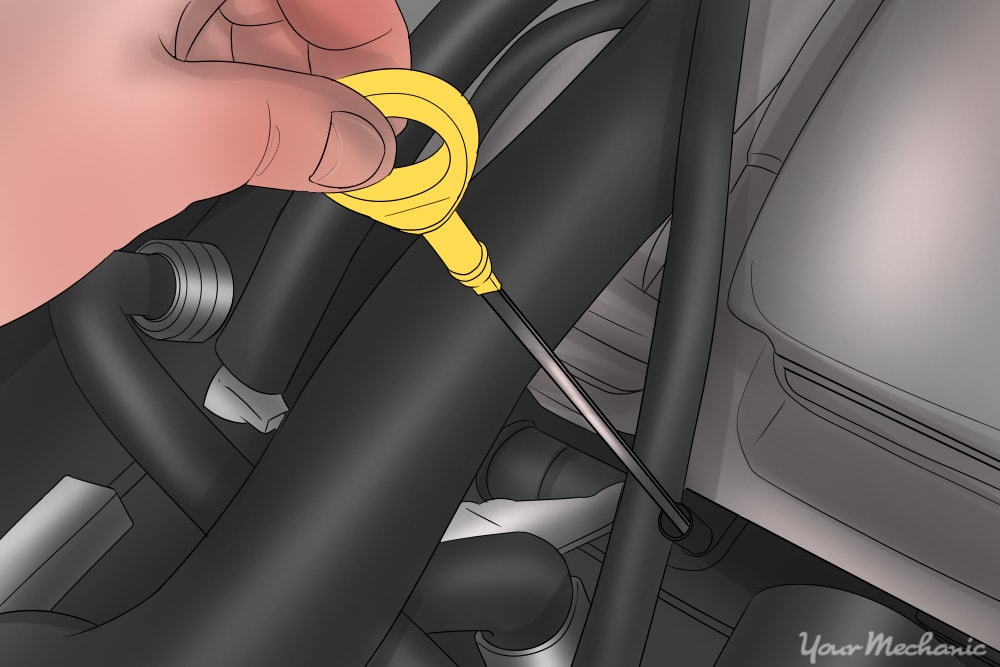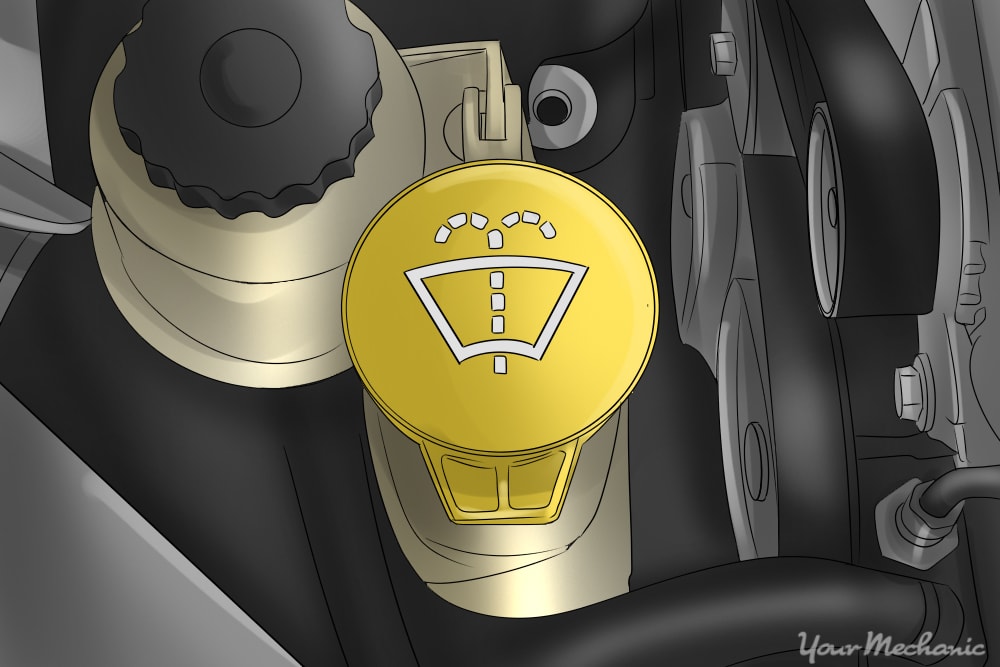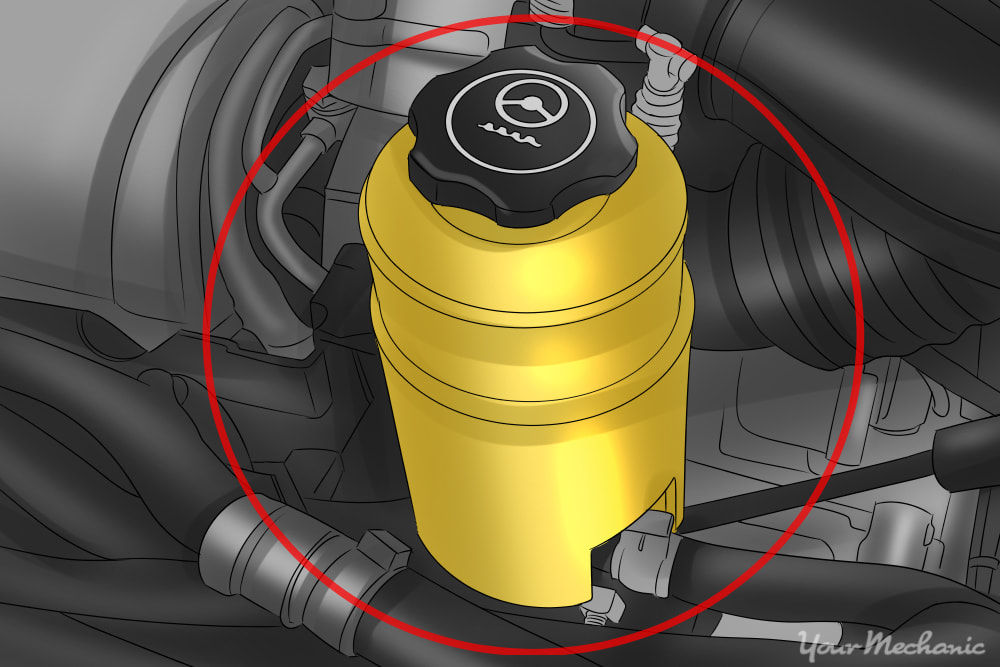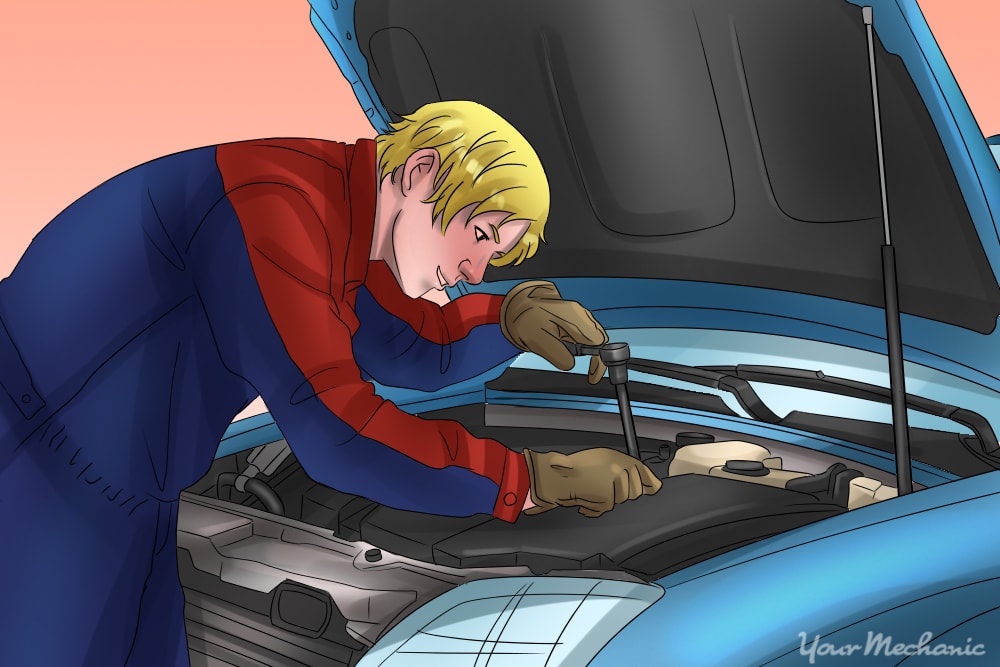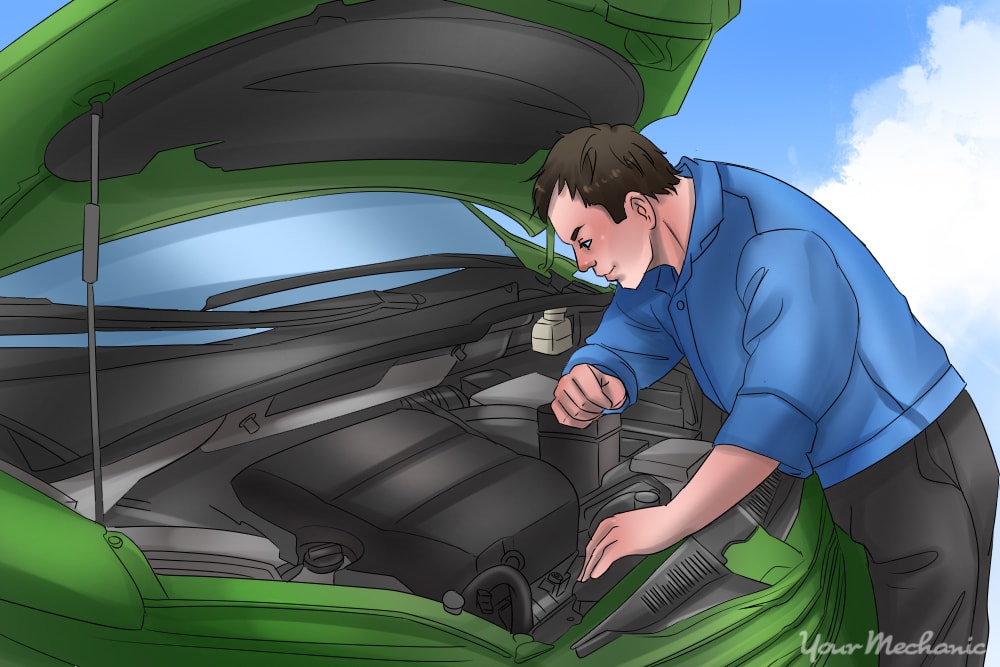

Few things are worse than walking into the garage and seeing a puddle of some unknown liquid under your vehicle. Fluid leaks are not uncommon and are simply a sign of wear and tear as a vehicle ages. Leaks can range from the extremely dangerous gasoline leak to the more of an inconvenience than an actual danger, windshield wiper fluid leak or normal water coming from the A/C drain.
Properly identifying the leaking liquid is key as some fluid leaks can be dangerous and can result in serious damage to the engine or other vital components. In addition, properly identifying the fluid can help you discover small problems before they turn into a major repair bill.
Here are some of the most common leaks that occur in vehicles and how to identify them:
Part 1 of 1 How to identify a fluid leak
Step 1: Try to determine where the leak is coming from. Most of the fluids in a vehicle have a defining color, smell or viscosity to them.
Identifying the fluid can help narrow down and eventually pinpoint where the leak is coming from. Put white paper or cardboard under the car where you think the leak is coming from so you can verify the fluid.
Here are some of the common fluids that leak from a car:
Coolant or Antifreeze: This fluid is often neon greenish in color, it can also be pink or bright orange. It has a sticky, light viscosity feel to it. Coolant is one of the most common leaks in cars. A serious leak should be repaired as quickly as possible. A coolant leak can lead to the engine overheating as it helps regulate the engine temperature. Have any leak checked as soon as possible.
Check the radiator, water pump, engine core plugs, heater hoses and radiator hoses for leaks.
The coolant level should be checked when the engine is cold. The coolant overflow reservoir should indicate the coolant level. If the fluid level does not hit the full line, there could be a leak.
Never add straight water to the system, use a 50/50 mixture of distilled water and antifreeze. Coolant should never be added to a hot engine. Allow the engine to cool first.
Oil: Oil leaks are another common fluid leak. If the puddle you found on the garage floor is oil, you should have the vehicle inspected and repaired as soon as possible. An oil leak can lead to serious engine damage if all of the oil leaks out of the engine.
Old oil is a black or dark brown color while newer oil has a yellowish brown color to it. Oil will smell like oil and have a slick viscosity to it. There are a number of engine components that can be responsible for an oil leak. In most cases, a professional mechanic should inspect and repair the system.
Here are a few components that can lead to an oil leak: improperly installed oil filter or leaking seal, loose oil pan plug, and a worn or leaking oil gasket.
Check the oil levels in the car by pulling out the dipstick (the handle is often yellow) and wiping it off with a towel. Put the dipstick back in the oil reservoir and pull it out again. There should be a high and low mark on the dipstick and the oil level should fall between the two. If it comes in below the lower mark, the system should be inspected, as there is a good chance there is a leak.
Gasoline: If the puddle in your garage smells like gasoline, you should have the vehicle inspected and repaired as soon as possible. Gasoline leaks can be dangerous. While there are a number of components that can result in leaking fuel, the most common issue is a leaking gas tank. If the puddle is near the rear of the car, it is almost always a gas tank problem.
If the puddle is towards the front of the car, it could be an issue with the fuel filter, a leaking fuel injector, a leak in the fuel line or even something simple like a missing gas cap can cause a strong gasoline odor. Regardless of where the leak originates, the car should be repaired as soon as possible. Do not drive the vehicle until the leak is identified and repaired.
Brake fluid: Brake fluid leaks tend to be rare but they do happen. Look for fluid that is clear or yellowish brown in color. It will have an oily feel but will be thinner than oil. If you find a puddle of brake fluid, do not drive the vehicle. Have the vehicle inspected and repaired immediately. If necessary have it towed, as it is not safe to drive.
A lack of brake fluid, due to the leak can lead to brake failure as the brake system works on hydraulic pressure and if there is not enough fluid, the brake system can fail.
Check the brake master cylinder reservoir. It is usually located near the firewall at the back of the engine compartment. If you cannot find it, check your owner’s manual. Newer vehicles will usually have a translucent reservoir with a “full” line marked on the reservoir. Older vehicles have a metal reservoir with a cap that is held on by a spring-loaded clamp. Verify the amount of brake fluid in the reservoir.
If it is extremely low, there is a good chance it is leaking. The brake system should be inspected and repaired immediately. Sometimes brake lines will get corroded and will break open losing the brake fluid.
Transmission fluid: Automatic transmission fluid is dark red or brownish as it gets older and light red or pinkish when it’s brand new. Some newer style fluids will start off light brown. It is thick and feels a bit like oil. A transmission fluid leak will usually leave a puddle near the front or middle of the vehicle. A transmission fluid leak can lead to serious damage to your transmission.
Transmission fluid not only lubricates the transmission components, it helps remove heat. A lack of transmission fluid can lead to a overheating, grinding and eventually the destruction of the transmission. A transmission leak can end in a very expensive repair if it is not dealt with quickly. Have the vehicle inspected and repaired immediately.
You can check the transmission fluid levels by pulling out the transmission fluid dipstick. If you are unsure of it’s location consult your owner’s manual. The engine should be warmed up before checking transmission fluid levels.
Pull the dipstick out and wipe it clean with a rag. Re-insert the dipstick and then pull it back out. The dipstick should have a full line on it. If the fluid levels are below the full line, there may be a leak.
Some vehicles do not have a standard dipstick and may need to be checked through a fill plug on the transmission.
- Warning: Check the color and feel of the transmission fluid. It should be clear and have a pinkish tint to it. If it is brown or black and feels like it has particles in it, the transmission should be inspected for possible problems.
Windshield wiper fluid: Windshield wiper fluid is blue, green or sometimes orange but in most cases it is blue. It looks and feels like water, because it is mainly water with a little ammonia added to help it enhance its cleaning ability with some coloring.
A windshield wiper fluid puddle will show up near the front of the car. A windshield wiper fluid leak is hardly life threatening but it can be annoying. Check the reservoir and wiper fluid lines for the leak. The system should be repaired in a timely manner, driving with a dirty windshield can be dangerous.
Power steering fluid: Much like the braking system, the power steering system relies on hydraulics and the proper fluid level is important. Low power steering fluid levels will make the vehicle difficult to steer and may damage components.
Power steering fluid is red or light brown when it is new and then goes darker as it gets older. It has a light thickness to it. If you find a red, brown or black stain on the floor of the garage, and notice the vehicle is harder to steer or makes a whining noise when turning, you should have the vehicle inspected and repaired immediately to prevent damage to the power steering components.
Locate your power steering fluid reservoir, which is usually located near the power steering pump, it should be clearly marked on the cap. The location can vary so check your owner’s manual if you cannot find it.
The reservoir may be made of translucent plastic, which will allow you to see the fluid level in the reservoir tank. Other vehicles may have a dipstick that is built into the reservoir cap. Check the fluid levels per the manufacturer's instructions, some vehicles require a warm engine while others prefer a cold engine. If the fluid level is low it may be due to a leak.
Water: This is the best kind of puddle to find on the garage floor. Water usually puddles on the garage floor because the air conditioning has been run and condensation has built up on the condenser. This is normal and should not be a problem.
Step 2: Resolve the problem. The truth is that a professional mechanic should deal with most fluid leaks. Most leaks are due to a problem with a failed component or seal and may need special diagnostic procedures that a mechanic can help you with.
In many modern cars, a warning light will appear if certain fluids are running low, which in some cases can indicate a leak. Oil, coolant, and washer fluid warning lights are common. If any of these lights come on you should check the levels and refill them. While running out of washer fluid is normal, if the oil or coolant warning light illuminates often, you should have the system inspected for problems.
If you are confident working on your own vehicle, you should repair the leak as soon as possible. If you are uncomfortable working on your vehicle or simply don’t have time our mobile mechanics will be happy to come to your home or workplace to inspect and repair your fluid leak.
Remember to not drive the vehicle if you are not sure it is safe to drive like fuel leaks or brake problems. If you are not sure then do not drive it for your safety. Have a qualified mechanic like one from YourMechanic.com come and diagnose the leak for you.


